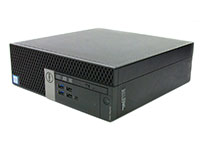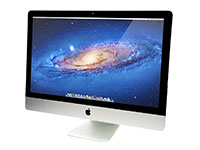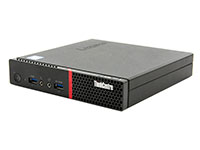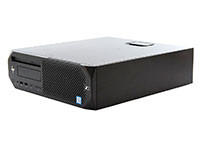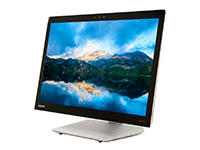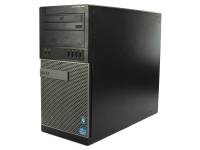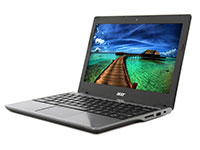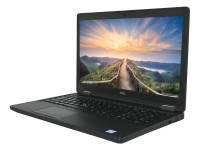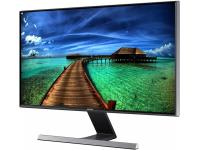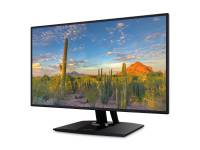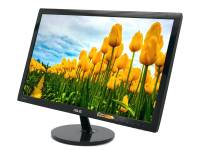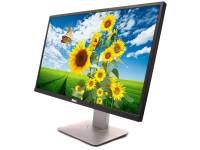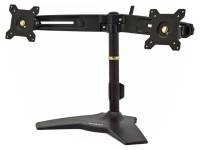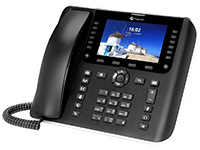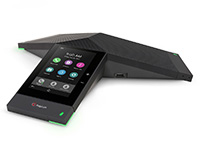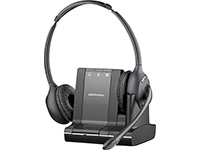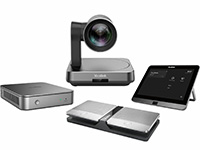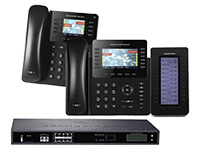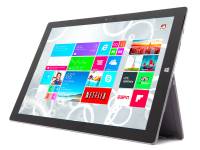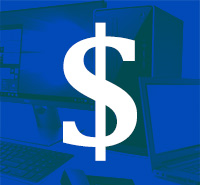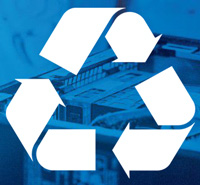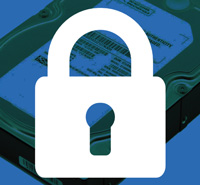
Photo by PC liquidations on pcliquidations.com
In today's mobile world, a laptop with a dying battery can quickly turn from a productivity powerhouse into an anchored paperweight. The frustration compounds when a once-reliable laptop seems to drain faster with each passing month.
Fortunately, there are numerous ways to extend your laptop's battery life immediately and over its entire lifespan..
This comprehensive guide explains how to increase laptop battery life and provides long-term strategies to boost your battery's capacity and keep your laptop and productivity running stronger, longer.
Understanding Your Laptop Battery
Modern laptops use lithium-ion batteries, a technology that moves lithium ions between positive and negative electrodes through an electrolyte solution. Unlike older battery technologies, lithium-ion batteries don't suffer from "memory effect," so you don't need to fully discharge them before recharging.
Each time your battery goes from charged to discharged and back, it completes one battery cycle. Partial discharges count as fractional cycles. Using 50% of your battery’s power ten times equals five complete cycles, not ten. Most modern lithium batteries are rated for 300-500 complete cycles before capacity loss occurs.
Battery degradation is natural and happens regardless of how carefully you treat your device. Typically, laptop batteries retain about 80% of their original capacity after 300-500 cycles, after which degradation often accelerates.
Understanding your battery's health is important for gauging how much life it has left and whether it might be time for a replacement. Follow these simple steps to assess your battery’s status:
Windows built-in battery report:
- Open Command Prompt as an administrator
- Type powercfg /batteryreport /output "C:\battery report.html"
- Navigate to your C: drive and open the HTML file
- Look for "Design Capacity" versus "Current Capacity" to determine health percentage
MacOS battery health information:
- Hold Option and click the battery icon in the menu bar
- Look for "Battery Condition" at the top of the dropdown menu
- For more details, click "System Information" and select "Power"
Using third-party tools to check battery information:
- BatteryInfoView (Windows)
- CoconutBattery (macOS)
- BatteryBar Pro (Windows)
Immediate Adjustments to Boost Battery Life
Maximizing your laptop’s battery power doesn’t require complex tweaks. Just a few immediate adjustments can make a noticeable difference in performance and longevity. These include:
Optimize Your PC’s Display Settings
Your laptop's display is typically the most power-hungry component, so reducing screen brightness to the lowest comfortable level can maximize power usage.
You can also adjust the screen timeout settings to turn off the display after short periods of inactivity (1-2 minutes on battery, 5-10 minutes when plugged in). Reducing screen brightness by enabling dark mode or using dark themes can also help lower your battery’s power consumption.
Additionally, lowering screen brightness resolution during non-essential tasks can ease the workload on your graphics processor and conserve battery power.
Manage Power Settings
Effective power usage starts with choosing the right power plan for your needs. Navigate to your system's built-in settings as follows:
- Windows: Search for "Power & Sleep settings" > "Additional power settings"
- macOS: Apple menu > System Preferences > Battery
- Linux: Look for power management in your distribution's System Settings
Select the appropriate power settings for your situation:
- "Power saver" or "Low power mode" for maximum battery life
- "Balanced" for everyday tasks
- "High performance" only when plugged in
To optimize battery usage, you can also create custom power plans with optimized processor power management, display brightness, and sleep timeouts.
Control Background Processes
Running too many apps in the background drains your battery’s power supply needlessly. Identify battery-draining applications using the Battery Usage report in Windows or the Energy Impact Monitor in macOS.
Close any unnecessary background apps in the system tray (Windows) or menu bar (macOS) when not needed. You can also manage startup programs through the Task Manager on Windows or the Login Items section under Users & Groups in macOS. This ensures that only essential apps launch at startup, reducing the background energy drain.
You can also enable Battery Saver mode in your laptop. This helps conserve battery status by limiting background activity and reducing screen brightness. Use Battery Saver mode whenever you're low on power or want to extend battery life while traveling.
Connectivity Management
Wireless connections can make your battery drain completely faster than you think. To minimize energy use:
- Turn off Wi-Fi and Bluetooth when not in use. Use function keys or quick settings to toggle them off
- Enable Airplane mode when working offline to turn off all wireless radios at once.
- Manage background syncing of cloud services by configuring sync applications to operate only when plugged in.
- Disconnect USB devices when not actively using them, as they draw power from your laptop.
|
Keyboard Lighting: Dim or disable backlit keyboards when not needed. These lights consume a surprising amount of power during long sessions. |
Software Tweaks for Extended Battery Life
|
Dell Latitude E5470 E5570 Precision 3510 Replacement Battery |
Acer Chromebook 13 CB5-311-T7H5 11.4V 2200mAh Laptop Battery | |
|
|
|
|
|
Compatibility: Dell Latitude E5470 E5570, Dell Precision 3510 |
Compatibility: Lenovo ThinkPad L410, L420, L520, T430, L412, T410i, 45N1010 |
Compatibility: Acer Chromebook 13 CB5-311-T7H5 |
|
[CHECK PRICE] button |
[CHECK PRICE] button |
[CHECK PRICE] button |
Extending your laptop’s battery life isn’t just about charging it. It also depends on how you use software and optimize system settings.
With a few smart tweaks, you can squeeze more hours from every charge and extend overall battery lifespan. Here’s how to increase laptop battery life by optimizing system settings:
Browser Optimization
Your web browser can be a major source of battery drain. Choose energy-efficient browsers over more power-hungry alternatives for better efficiency.
You can also simplify your browsing experience by managing browser extensions and tabs, removing unused extensions, and limiting open tabs.
Disable auto-playing videos to cut unnecessary media usage, and consider using ad blockers to prevent power-hungry media. Also, adjust hardware acceleration settings for optimal performance without excess energy use.
Operating System (OS) Updates
Staying current with operating system updates isn’t just about new features. It’s essential for energy efficiency. Many operating system updates include enhanced power management tools, bug fixes, and hardware optimization. Here is what to look for:
- Windows: features like Modern Standby, battery usage reporting, and power throttling.
- macOS: App Nap, Power Nap, and Battery Health Management.
- Linux: TLP, PowerTOP, and Laptop Mode Tools provide advanced configuration options.
Application Settings
Start by adjusting your email client’s sync frequency to reduce automatic checking when running on battery power to extend battery life. For virtual meetings, optimize video conferencing by lowering the camera resolution or switching to audio-only mode when video isn’t necessary.
You can also optimize battery usage by using lightweight alternatives to common programs, such as Notepad++ instead of Microsoft Word or VLC Media Player instead of more resource-intensive options.
Additionally, to further enhance efficiency, take advantage of built-in battery-saving modes in popular applications such as Microsoft Office and Spotify.
Hardware Considerations for Extended Battery Life
Hardware choices and maintenance routines play a major role in long-term battery performance. Follow these tips to extend your laptop’s battery life and improve efficiency:
Cooling and Temperature Management
Heat accelerates battery degradation. To keep your laptop cool, use it on hard, flat surfaces that allow proper airflow and don't block air vents. For extra cooling, consider using a cooling pad to reduce operating temperatures.
Remember to clean dust from cooling systems using compressed air while your device is powered off.
Storage Optimization
SSDs use low battery power compared to traditional HDDs. To conserve energy, minimize unnecessary disk operations by disabling automatic defragmentation and reducing file backup frequency when on battery.
To improve efficiency, perform regular maintenance, such as disk cleanup. Also, external storage devices can be managed by ejecting them when not actively transferring files.
Upgrading for Better Battery Life
More RAM can reduce power consumption by minimizing disk access for virtual memory. SSD replacements offer less power consumption than traditional HDDs.
For emergency charging on the go, look for power banks with USB-C Power Delivery that match your laptop's power requirements.
|
Auto Syncing: Disable automatic cloud sync (OneDrive, Dropbox, iCloud) while on battery to reduce nonessential background activity. |
Daily Habits for Better Battery Health

[CHECK PRICE] button
Your laptop battery's health affects its performance and longevity. Protecting it doesn't require tech wizardry, just smart daily habits. These simple changes can extend your battery’s lifespan:
Charging Best Practices
- Follow the 20-80% battery percentage rule. Lithium batteries last longer when kept at a charge between 20% and 80%. This can extend battery lifespan compared to frequent full charging cycles.
- Avoid complete discharge cycles as they accelerate battery aging.
- Fully charge only when needed for maximum runtime (travel, long meetings).
- Modern laptops have battery protection features that halt charging at optimal levels, making manual unplugging less necessary.
Temperature Considerations
- Avoid exposing your laptop to direct sunlight or leaving it in hot cars.
- Allow cold laptops to warm to room temperature before charging.
- For long-term storage, store in a cool, dry environment.
Physical Handling and Care
- Ensure proper ventilation with clearance around exhaust vents.
- Always shut down before placing in a bag to prevent overheating in confined spaces.
- Use padded laptop bags and avoid stacking heavy items on top of laptops during transport.
Troubleshooting Common Battery Usage Issues
Battery problems can be frustrating and disruptive, whether it's rapid drain, charging failures, or signs of wear. Practical steps to troubleshoot sudden battery drain include:
Sudden Battery Drain
If your battery is discharging unusually fast, start by checking for runaway processes using Task Manager or Activity Monitor. Additionally, look for unusual network activity that could indicate unwanted connections.
Next, scan for malware or crypto miners that might be consuming resources. If your battery readings seem off, calibrate your battery power by charging to 100%, using it until shutdown, and recharging uninterrupted.
Battery Not Charging Properly
Start by inspecting the AC adapter and charging port for physical damage or debris that could obstruct the connection. Then, update BIOS/firmware and battery management drivers, as outdated software can impact charging performance.
If the issue persists, try booting your system in Safe Mode to determine if third-party software interferes with the charging process.
If none of these steps resolve the problem, seek professional assistance for internal connector damage or motherboard issues.
Battery Wear Indicators
Watch for battery health warnings such as "Consider replacement" or "Service battery." For more detailed information about our battery’s health, use diagnostic tools such as HWiNFO, CoconutBattery, or BatteryBar Pro for detailed monitoring.
Long-Term Strategy for Maximum Battery Lifespan

Photo by PC liquidations on pcliquidations.com
Taking a proactive approach to battery care is essential to keeping your laptop running efficiently and extending its usable life. Key maintenance practices include:
Scheduled Maintenance Routine
- Run quarterly battery status checks to track capacity changes.
- Perform a calibration cycle every 3 months if battery readings seem inaccurate.
- Clean up software by uninstalling unused applications and removing temporary files.
- Adjust power settings seasonally based on changing usage patterns and environments.
When to Consider Battery Replacement
- Watch for key indicators such as runtime less than 50% of the original, sudden charge drops, or physical deformation.
- Weigh the replacement cost against a new laptop.
- Source quality replacement batteries from original manufacturers or reputable third parties.
- Consider professional installation for sealed batteries in modern ultrabooks.
|
Scheduled Downtime: Use Task Scheduler or macOS Automator to trigger auto-shutdowns during known idle hours, improving overall charging habits and battery longevity. |
Environmentally Conscious Battery Usage
Sustainability starts with smarter tech choices. From responsible charging habits to choosing energy-efficient devices, managing your laptop’s battery can reduce your carbon footprint. This is how you make a measurable difference:
Extending Battery Life for Sustainability
Laptop battery production generates CO2 emissions, making extended use essential for reducing environmental impact. You can cut that impact by using a battery for four years instead of two.
When a battery reaches the end of its life, never throw it in the regular trash. Instead, take it to a certified e-waste recycling facility. Proper recycling can recover a lithium battery’s components, minimizing waste and conserving valuable materials.
Choosing Energy-Efficient Computing Options
Refurbished laptops have already amortized their manufacturing carbon footprint, making them a more sustainable choice from the start. Choosing models with ENERGY STAR certification (30 to 40% more energy efficient than standard units) further reduces environmental impact.
It's also important to consider the total cost of ownership, factoring in long-term energy consumption. Business-class refurbished laptops often provide better battery replaceability and longer lifespans, enhancing value and sustainability.
Maximize Battery Life, Minimize Environmental Impact
You now have the knowledge and tools to transform your laptop from a battery-dependent device into a reliable, long-lasting companion.
By implementing these strategies, from simple display adjustments to smart charging habits, you're not just extending battery life, you're taking control of your technology investment.
Remember, you don't need to implement every strategy at once. Start with the immediate adjustments that feel most manageable, then gradually incorporate the long-term practices that align with your lifestyle.
Ready to put your new knowledge into action? Visit PCLiquidations.com to explore our selection of refurbished laptops with excellent battery performance, or find the perfect replacement battery to give your current device new life. Your journey toward better battery management starts with your next choice.
